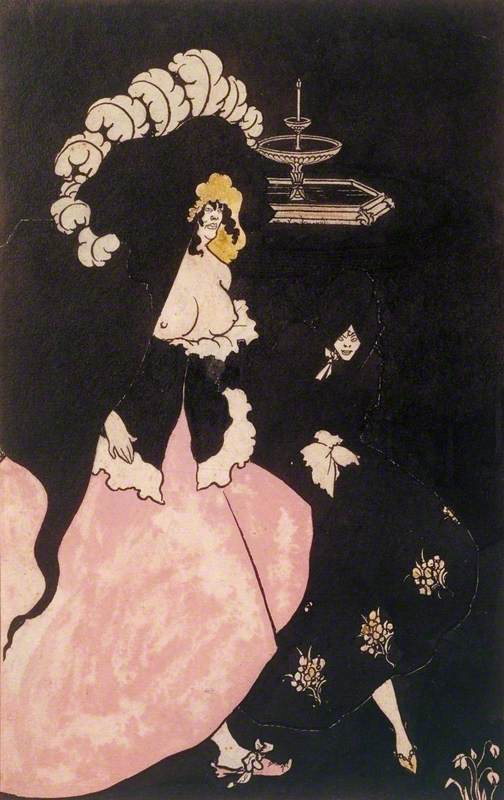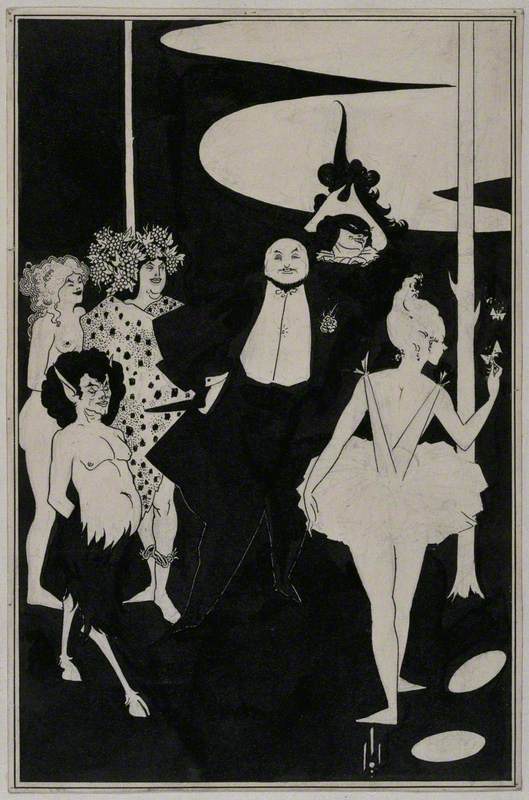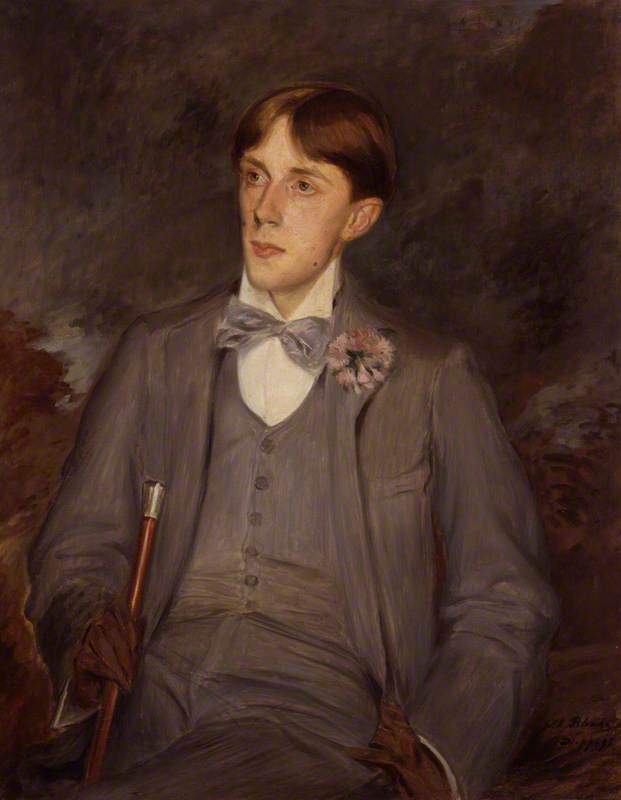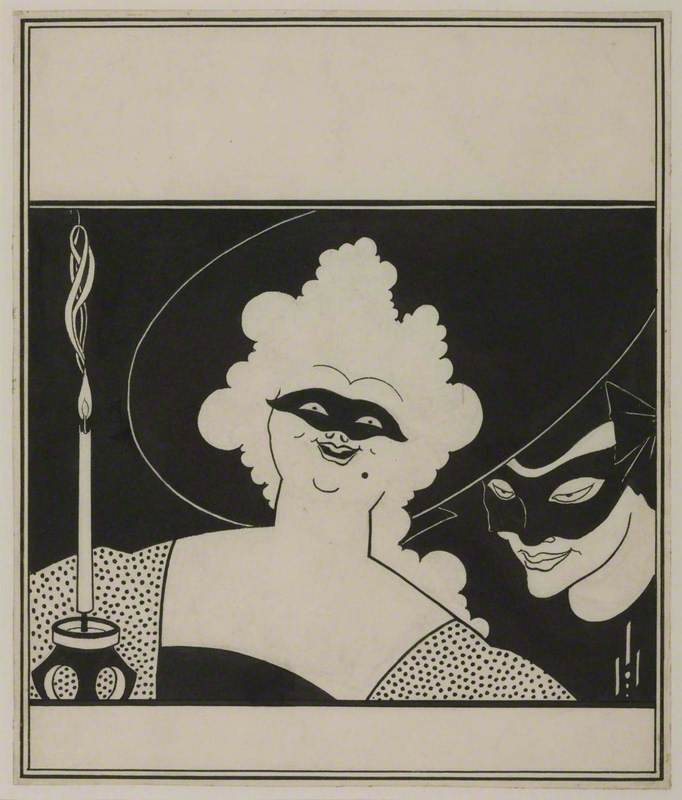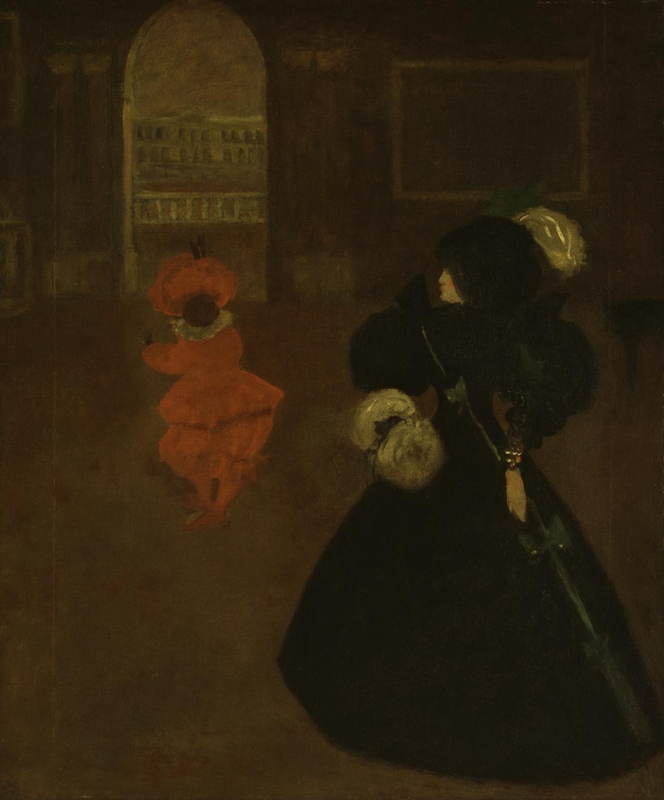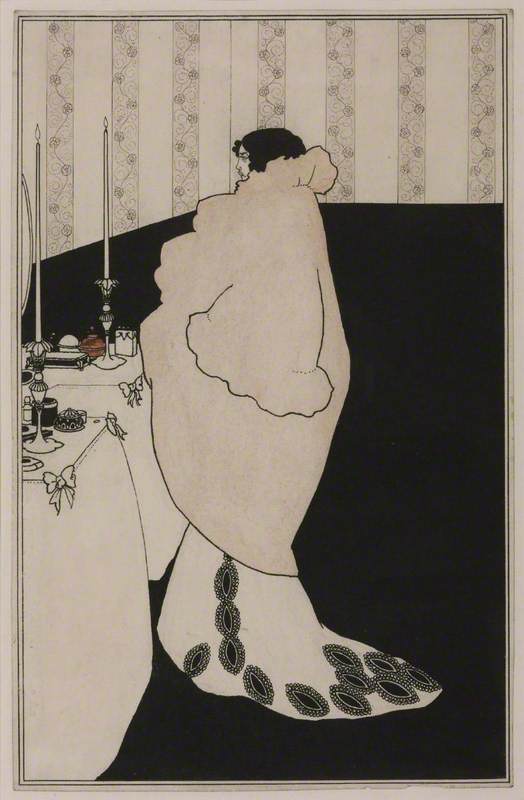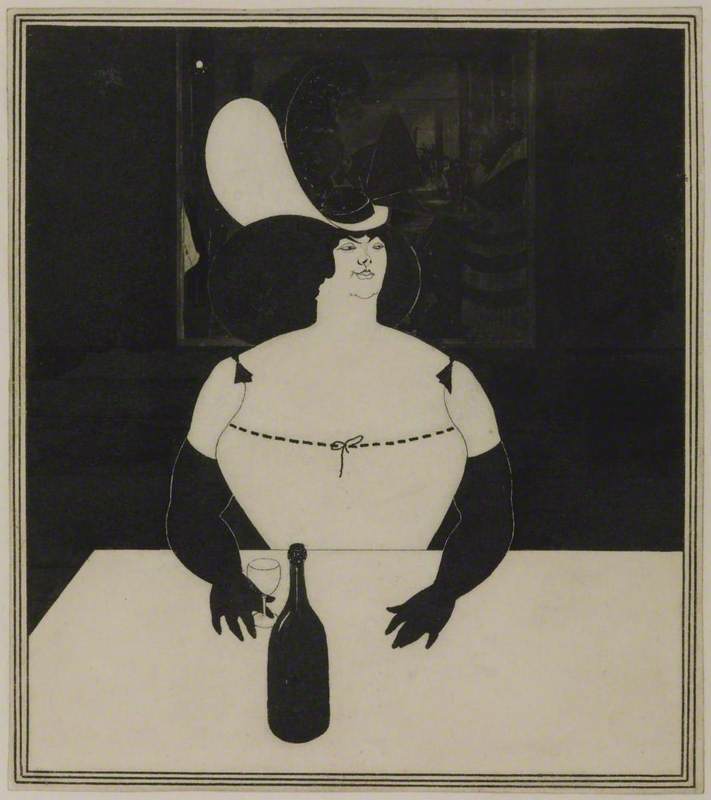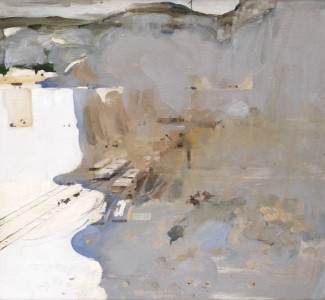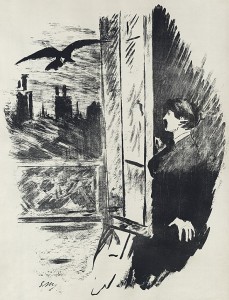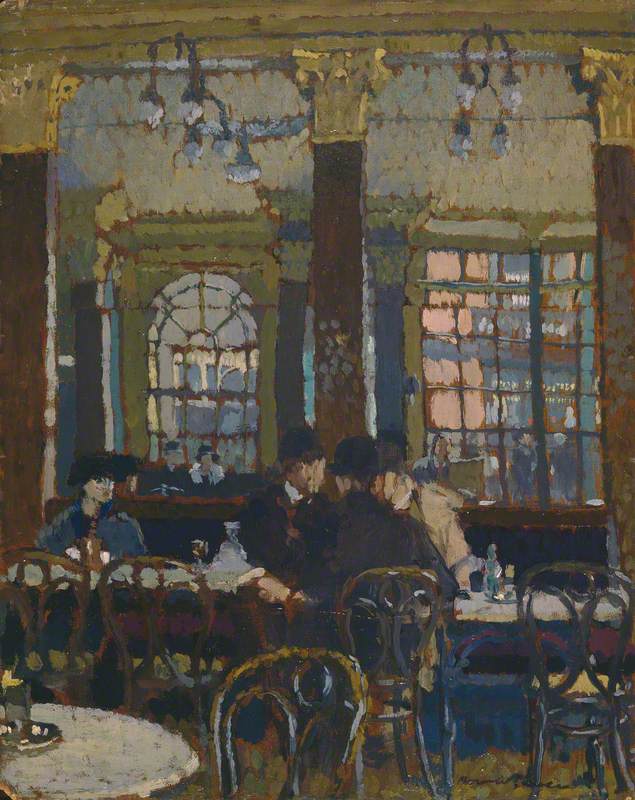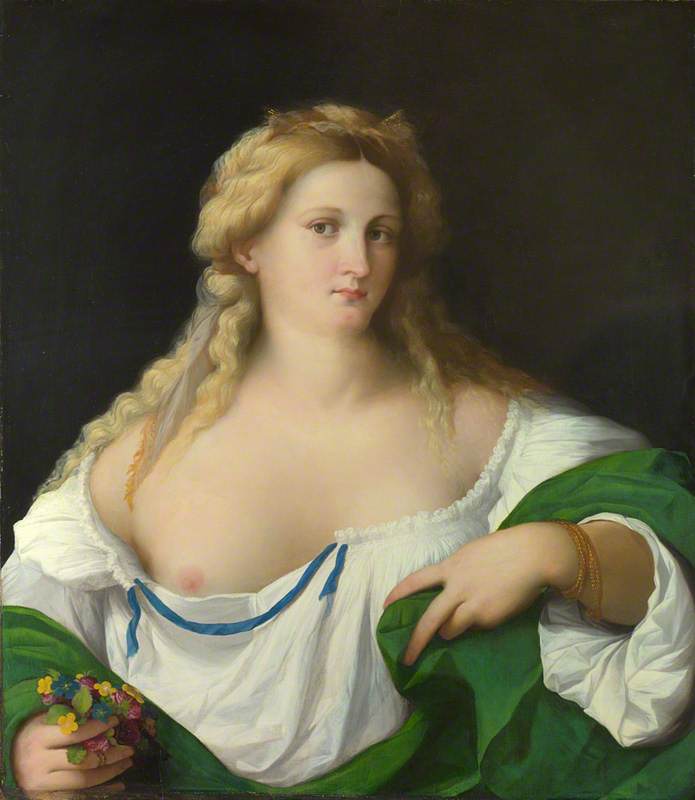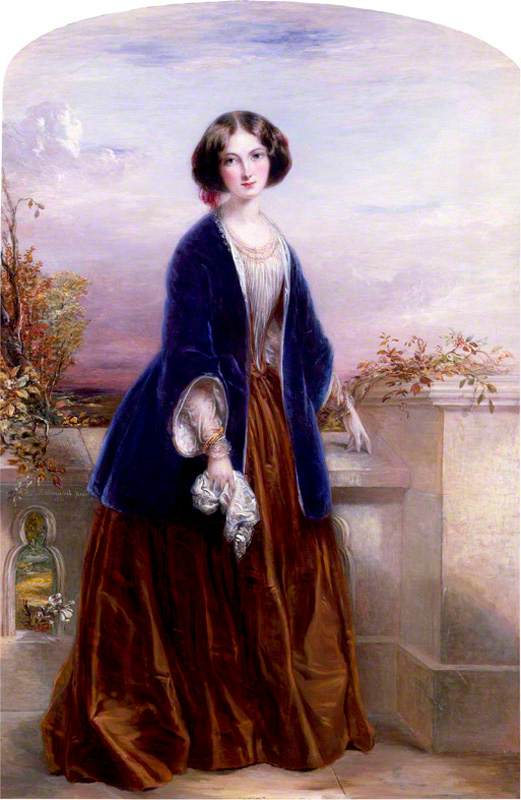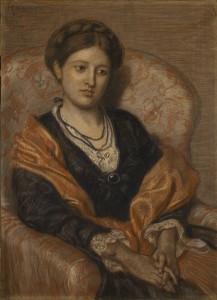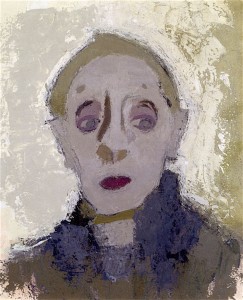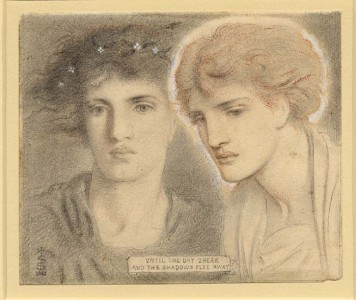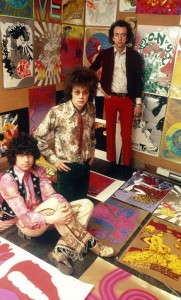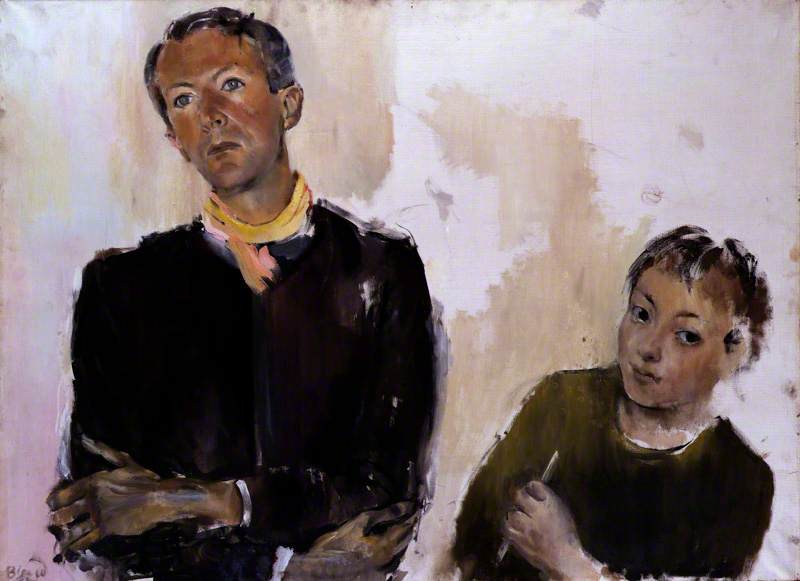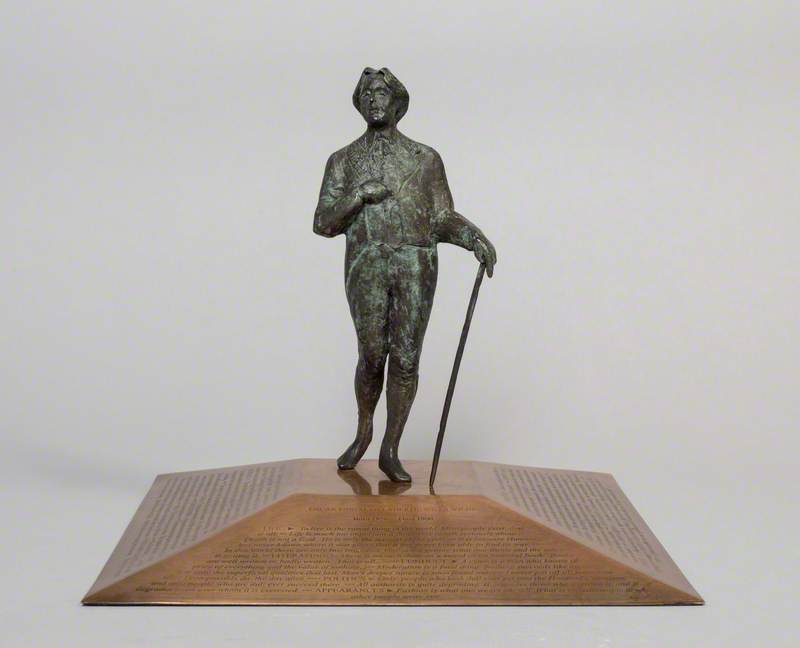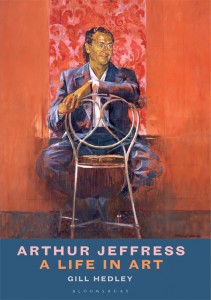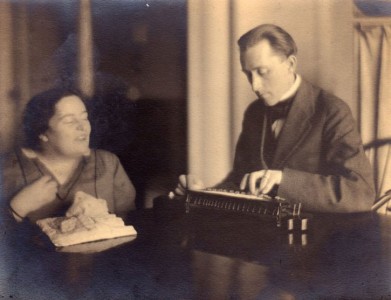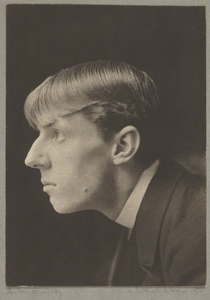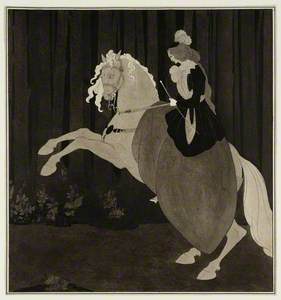Aubrey Beardsley is best remembered as the enfant terrible of the 1890s. His art and life are synonymous with the brilliance and decadence of the era. Though he only lived to 25, his distinctive black-and-white illustrations brought him fame and notoriety. He moved effortlessly from style to style, assimilating a vast range of sources, but always retaining his 'own peculiar individuality' (i).
While today he is most famous for illustrating Oscar Wilde's Salome, it was as art editor of The Yellow Book in 1894 that his celebrity reached its peak. The new art and literary periodical was the succès de scandale of the decade, but it was Beardsley's designs that stole the show and gave the publication its daring modernity.
The following artworks are just some of the highlights of 'the Yellow Nineties'.
When the first volume of The Yellow Book appeared in April 1894, it immediately caused a sensation. Not only was the cover an eye-catching yellow – a playful nod to the French 'naughty' novels of the time (which also had yellow wrappers) – but Beardsley's cover design was startlingly new and modern.
For Beardsley's contemporaries, the two masked revellers would have brought to mind popular masquerades, where anonymity gave freedom to behave as one pleased. Such hedonism – as the leering male figure and the woman's overt sensuality seem to imply – might also include illicit sexual encounters. This was the side of London nightlife that polite Victorian society would have rather ignored – and the side that Beardsley delighted in depicting.
In his Yellow Book illustrations, for the first time, Beardsley 'gave utterance to the life of the day as he saw it' (ii). In particular, members of the demi-monde became a regular presence in his work, as here. It is perhaps unsurprising then that the laughing woman provoked the most outrage, Oscar Wilde going so far as to describe her as 'a terrible naked harlot'.
It was not just the subject that shocked though. This drawing ushered in Beardsley's new, highly stylised manner. Characterised by bold masses of flat black set against pure white (the untouched paper), such graphic simplicity was entirely novel.
Beardsley's income from The Yellow Book enabled him to buy a house with his sister, Mabel, at 114 Cambridge Street in Pimlico, London. He quickly set about decorating his home, embarking upon this, his only known oil painting.
He began this unusual, double-sided painting in Walter Sickert's studio, under that artist's guidance. Indeed, the dark tonality of the picture may be due to his friend's preferred palette. The front of the canvas, Caprice, was started first and relates closely to his drawing, The Comedy Ballet of Marionettes I (published in the second volume of The Yellow Book). The drawing explores themes of sexual temptation and discovery, but the fanciful scene of the painting is far more ambiguous, not least because it is unfinished. The relationship between the fashionably dressed young woman, with alluringly rouged cheeks and lips, and the faceless character beckoning her to the door is elusive. The red eighteenth-century style costume worn by this figure with dwarfism may relate to theatrical costumes, or to Beardsley's knowledge of historical paintings.
Perhaps because he grew bored, or felt the picture was unsuccessful, Beardsley abandoned this side, turning over the canvas and starting a new subject on the reverse, between the stretchers.
Masked Woman with a White Mouse
c.1894, oil on canvas by Aubrey Beardsley (1872–1898) 
There has been much conjecture about the mysterious masked woman and the mouse, but without conclusion. All that is known, is that Beardsley preferred Woman with a White Mouse, choosing it to adorn the walls of his new home.
Women at their dressing table are a recurring motif throughout Beardsley's art, but as ever, he put his own stamp upon an established visual tradition. Almost entirely hidden by her lavish, oversized coat, the woman stares steadily at her candlelit reflection. It is unclear if she is on her way out or has just returned, but her heavy-lidded eyes and the dark shadows underneath, and her down-turned mouth may be the tell-tale signs of too much dissipation or ill health. Such characteristics would have been readily recognised by contemporaries as features of the 'Beardsley woman', a recurrent figure in his art. Frequently decried as ugly and immoral by conventional Victorians, she offered a novel image of intelligence and independence.
When first published in St Paul's magazine the drawing was simply titled Girl at her Toilet, but when it appeared in the third volume of The Yellow Book it was retitled La Dame aux Camélias. This identifies the woman as Marguerite Gautier, the tragic heroine of Alexandre Dumas's 1852 novel of the same title. While this testifies to Beardsley's voracious reading habits and his Francophilia, he may also have identified with the character because she, like him, was consumptive. One of his few coloured drawings, Beardsley added the washes of pink and red between 1894 and 1897, after it was published.
Not all of Beardsley's drawings made it into The Yellow Book, suffering the same censorship as so many of his commissions. This drawing was one of those rejected – despite Beardsley's best efforts. Writing melodramatically to the publisher John Lane, he threatened to kill himself if it did not appear in the first volume. Pushing the point further, he went on, 'Really I am sure you have nothing to fear... The picture shall be called A Study in Major Lines. It cannot possibly hurt anybody's sensibilities.'
And, at first glance, the picture of a woman drinking in the popular London haunt, the Café Royal (glimpsed in the mirror behind her) may seem inoffensive. But her solitary night-time occupation and low décolletage associate her with the actresses, dancers, singers and sex-workers on the fringes of respectable Victorian society. More contentiously still, it pays homage to Degas' notorious L'Absinthe (1875–1876), which Beardsley had seen when it was exhibited to much public uproar at the Grafton Galleries in 1893.
Such concerns, though, paled in comparison to the suspicion that the domineering member of the demi-monde portrayed was, in fact, an unflattering caricature of Beatrice Whistler, the wife of the famously litigious painter, James McNeill Whistler. Beardsley's mild reassurances only added fuel to the fire. Although the new title he suggested emphasised the artistic qualities of the drawing, which Beardsley claimed was one of his best, it also wittily jibed at Whistler's musical titles.
Atalanta in Corydon
1895, pen & black ink, with black wash by Aubrey Beardsley (1872–1898) 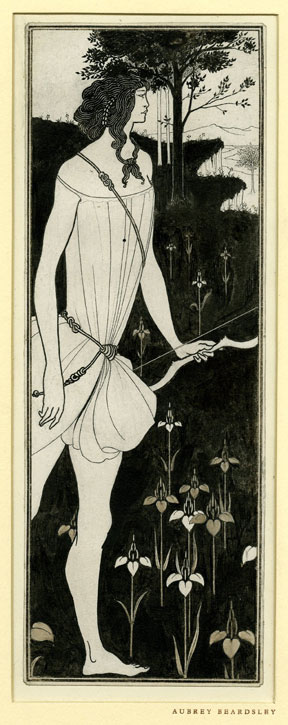
For this drawing, intended for the fifth volume, Beardsley returned to classical mythology – perhaps inspired by Algernon Swinburne's 1865 poem of the same title. It depicts the ancient Greek huntress, Atalanta, who famously killed the monstrous Calydonian boar. He portrays Atalanta in her pursuit, bow in hand, emphasising her movement and strength in contrast to the delicately detailed floral landscape around her.
But before the drawing could be published, Beardsley became embroiled in the scandal surrounding Oscar Wilde's arrest and conviction for 'gross indecency' in the spring of 1895. Wilde was seen carrying a yellow French novel under his arm at his arrest, which was widely mistaken for The Yellow Book. In the public imagination, this confirmed that the audacious young art editor was the embodiment of decadence and 'degeneracy'.
The moral backlash turned towards the publication and, with an angry mob outside the publishing house, John Lane succumbed to pressure and sacked Beardsley. All of his designs, including this one, were swiftly removed from the fifth volume with the exception of the back cover, which was overlooked in the hurry.
While the magazine continued without him, it is nonetheless Beardsley's contributions that will remain unforgotten for, as one contemporary critic noted, 'to most, Aubrey Beardsley is The Yellow Book' (iii).
Alice Insley, Assistant Curator of historic British art at Tate Britain
Tate Britain's 2020 Aubrey Beardsley show is currently closed due to the Covid-19 pandemic
(i) John Rothenstein, The Artist of the 1890s, London, 1928, p.166
(ii) Haldane Macfall, Aubrey Beardsley, London, 1928, p.56
(iii) The Artist, 1894
Further reading
Stephen Calloway, Aubrey Beardsley, London, 1998
Matthew Sturgis, Aubrey Beardsley: A Biography, London, 1999
